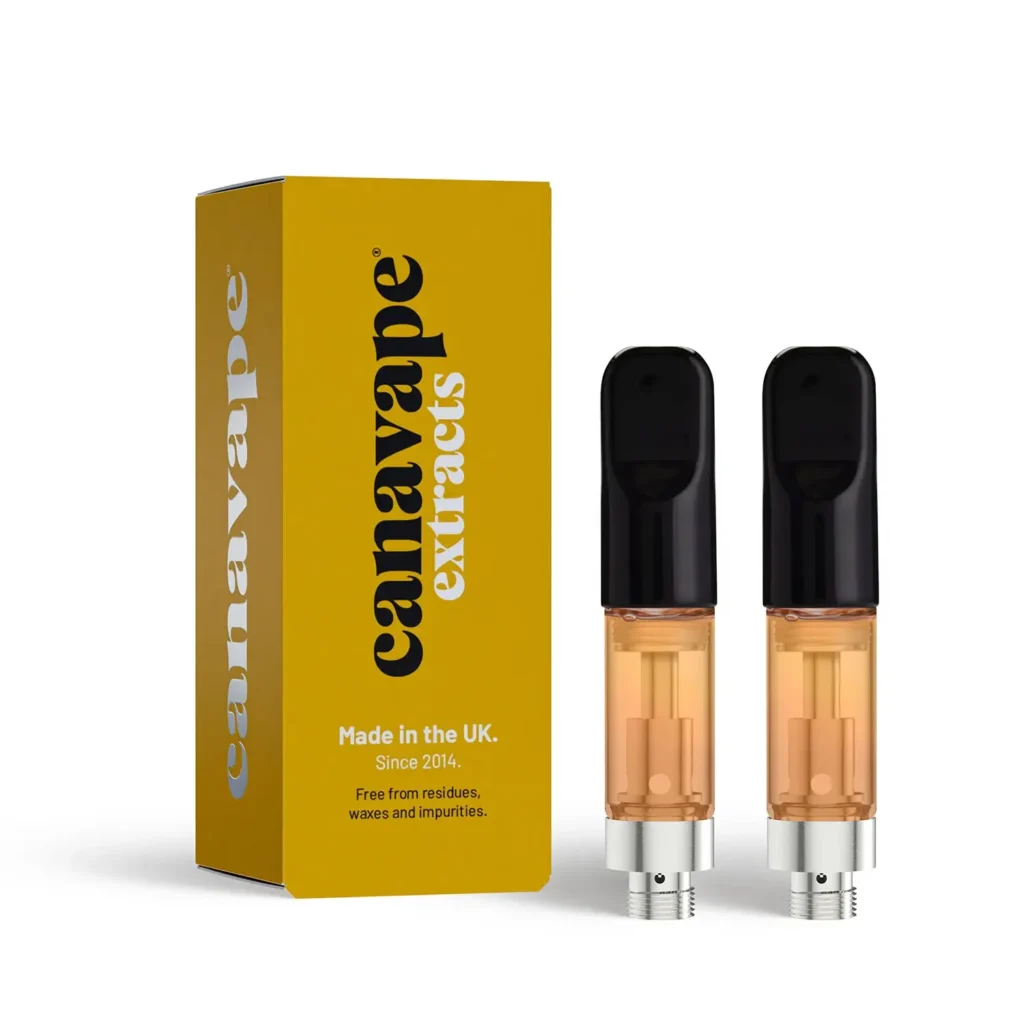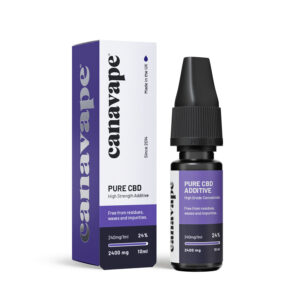
Exploring the realm of vaping without nicotine for anxiety opens up a fascinating avenue for those seeking alternative relaxation methods.
Early evidence suggests there are potential benefits and considerations to be aware of when exploring vaping without nicotine for anxiety relief.
As individuals navigate the complexities of managing anxiety, the science behind utilising vaping without nicotine for anxiety relief gains increasing attention.
This comprehensive guide delves into the intricacies of this practice, shedding light on its potential benefits and considerations.
For those intrigued by the concept of vaping without nicotine for anxiety, this detailed exploration aims to provide valuable insights and understanding on this emerging topic.
At Canavape, we specialise in CBD vape cartridges CBD e-Liquids and CBD oils from ECS — both nicotine-free and crafted to support balance, clarity, and wellbeing. While vaping is not a treatment for anxiety, many people find that choosing high-quality, non-nicotine options like CBD can support mindful routines.
Anxiety is a natural response to stress, acting as a warning system that triggers our ‘fight or flight’ instincts. It’s characterised by feelings of tension, worried thoughts, and may be accompanied by physical changes like increased blood pressure.
When we perceive a threat, our bodies release a flood of stress hormones, such as adrenaline and cortisol, preparing us for immediate action. However, when these responses are disproportionate to the actual danger or continue after the threat has passed, it can lead to an anxiety disorder.
This state of excessive unease can interfere with daily activities, cause distress, and increase the risk for other medical conditions.
Understanding the biological underpinnings of anxiety is crucial to exploring how vaping without nicotine might influence these processes and potentially serve as a tool for relief.
Vaping without nicotine for anxiety is thought to influence anxiety levels through several mechanisms. For some, the act of vaping mimics the calming ritual of smoking but without the harmful effects of nicotine, which can exacerbate anxiety.
However, it’s crucial to be aware that the deep breathing involved in vaping can also lead to lung and throat irritation, a potential side effect stemming from inhaling chemicals in the e-liquid such as propylene glycol and glycerol.
This irritation can manifest as a tingling or burning sensation in the throat, with an increased risk of lung infections and potential respiratory issues over time.
Despite this, certain flavours used in vape juices are believed to have aromatherapeutic properties that could contribute to a sense of calm. It’s important to note, however, that while vaping may provide temporary relief, it is not a cure for anxiety disorders.
Long-term management of anxiety typically involves a combination of therapy, lifestyle changes, and, where appropriate, medication. Individuals considering vaping as a means to manage anxiety should do so with caution and seek advice from healthcare professionals.

Vaping involves inhaling and exhaling the aerosol, often referred to as vapour, produced by an electronic cigarette or similar device.
These devices heat a liquid to generate vapour which typically contains flavours and can also contain nicotine, although many choose the nicotine-free option.
Comparing nicotine vape products with non nicotine vapes, the latter are sought after for their absence of nicotine, appealing to those interested in vaping without the addictive and toxic chemicals associated with nicotine.
Vaping without nicotine means that the e-liquid used doesn’t contain this addictive substance, potentially reducing health risks associated with nicotine.
The device itself consists of a battery, a heating element, and a cartridge or tank that holds the e-liquid. When the device is activated, the battery heats the heating element, which turns the liquid from the cartridge into an aerosol.
This mist is then inhaled through the mouthpiece. As there is no combustion involved, vaping is considered by some as a less harmful alternative to traditional smoking, though research is ongoing regarding its long-term effects.
Choosing to vape without nicotine offers several advantages, particularly for individuals looking to avoid the addictive properties of nicotine while still engaging in the physical act of vaping.
Nicotine-free vaping, including the use of nicotine free vape juice and non nicotine vape juice, eliminates the risk of developing nicotine dependence, making it a potentially safer choice for those who vape for pleasure rather than as a means to ingest nicotine.
Furthermore, it allows users to enjoy a variety of flavours without the potential side effects associated with nicotine, such as increased heart rate and blood pressure, as well as heightened anxiety, thus providing an anxiety release and stress relief.
For individuals using vaping as a tool to quit smoking, nicotine-free options like nicotine free vapes may serve as the final step in weaning off their nicotine intake completely, highlighting the cost-effectiveness and health benefits of nicotine-free vapes.
While vaping without nicotine is not entirely risk-free, it does reduce the exposure to nicotine-related health issues, addressing the misconceptions and risks associated with nicotine-free vapes, including their relationship with anxiety and clever marketing tactics promoting harmlessness.

The body of research examining the impact of vaping without nicotine for anxiety is still developing. Early studies suggest that the ritual of vaping may have a placebo effect, providing a sense of relief from anxiety through the mere act of performing a repetitive, soothing activity.
This could be particularly beneficial for people who have previously smoked cigarettes as a way to manage stress and are seeking healthier alternatives.
Additionally, some research indicates that certain flavours used in e-liquids might have a calming effect on the user.
However, it’s essential to approach these findings with caution as scientific consensus has not yet been reached, and more robust, long-term studies are needed.
Researchers are also looking into the psychological effects of vaping and its potential as a coping mechanism for stress and anxiety.
As the field grows, the scientific community will gain a clearer understanding of how vaping without nicotine interplays with anxiety management.
While clinical research on vaping without nicotine for anxiety is limited, there is an abundance of personal accounts and testimonials that provide insight into individual experiences.
Many users report a subjective sense of calm and relief from anxiety symptoms when vaping, particularly those who have transitioned from smoking. These anecdotes often highlight the ritualistic aspect of vaping as a major factor in their perceived anxiety relief.
Case studies looking at individuals’ use of vaping to manage anxiety have also surfaced, illustrating a variety of outcomes.
Some report a marked decrease in anxiety levels, while others notice no significant change. It’s important to note that such personal stories and case studies are not scientific evidence; they are individual experiences that may not be generalisable.
However, they do offer a starting point for understanding potential psychological and behavioural effects of vaping without nicotine on anxiety.
There are many misconceptions surrounding vaping, especially regarding its safety profile compared to traditional smoking. One common myth is that vaping is entirely harmless.
It’s vital to understand that while vaping may reduce exposure to some of the harmful compounds found in cigarette smoke, it is not without potential risks.
Vape liquids contain various chemicals that can have adverse health effects, and the long-term impacts of inhaling these substances are not fully understood.
Another myth is that vaping always leads to smoking. However, there is no definitive evidence to suggest a consistent and direct progression from vaping to smoking, particularly when it comes to nicotine-free vaping.
It’s also mistakenly believed that all vape liquids contain nicotine, but there are many nicotine-free options available. Dispelling these myths is crucial for individuals to make informed decisions about vaping.
Contrary to the belief that vaping is as harmful as smoking cigarettes, it’s important to note that vaping does not involve tobacco smoke, offering a way to enjoy various flavours without the harmful carcinogens and toxins associated with traditional smoking.
While vaping without nicotine may reduce certain risks associated with nicotine addiction, it is not devoid of potential dangers.
The inhalation of heated chemicals, flavouring agents, and other constituents found in e-liquids could pose health risks.
For instance, some flavourings used in vape juice have been linked to respiratory issues when inhaled, despite being safe for oral consumption.
It is also important to consider the quality and composition of the e-liquid and the vaping device itself, as these can vary widely. Low-quality materials or improperly manufactured products may increase the risk of inhaling harmful substances.
To address these risks, users should only purchase from reputable sources that provide transparent information about their products’ contents and manufacturing processes.
Additionally, staying informed about the latest research and regulations can help individuals make safer choices if they choose to vape.
Selecting the appropriate vaping equipment is crucial for a safe and enjoyable experience, especially when vaping without nicotine for anxiety relief.
Firstly, opt for a quality device from a reputable manufacturer to ensure it operates safely and efficiently. Devices range from simple, low-power pod systems to more advanced personal vaporisers that allow for temperature and airflow adjustments.
The type of device can affect the delivery and intensity of the vapour produced, so consider what suits your needs best.
Additionally, when choosing e-liquids, select high-quality, nicotine-free options from trusted suppliers that clearly list their ingredients. These should be free from harmful additives such as diacetyl, which has been linked to lung disease.
It’s also advisable to start with a lower wattage and increase gradually to find the most comfortable and effective level for anxiety management.
Remember, the goal is to find a balance that provides the desired calming effect without exposing yourself to unnecessary risks.
To ensure a safe and effective vaping experience, especially when using it as a potential tool for managing anxiety without nicotine, consider the following tips.
Start by educating yourself about the different types of vaping devices and e-liquids available. Knowledge about the components and potential risks can help you make informed choices.
Use only high-quality, properly labelled e-liquids from reputable sources, and avoid those with unknown or potentially harmful ingredients.
Regularly clean and maintain your vaping device to prevent malfunction or contamination, which could lead to exposure to unsafe substances.
Additionally, listen to your body and monitor how vaping affects your anxiety. If necessary, consult with a healthcare professional to discuss the role of vaping in your anxiety management plan.
Lastly, bear in mind that vaping should not replace proven anxiety treatments such as therapy or prescribed medication.
If you’re considering non-nicotine options for managing stress or quitting smoking, explore our lab-tested CBD vape cartridges and ECS CBD oil range — trusted by thousands across the UK for quality and consistency.
